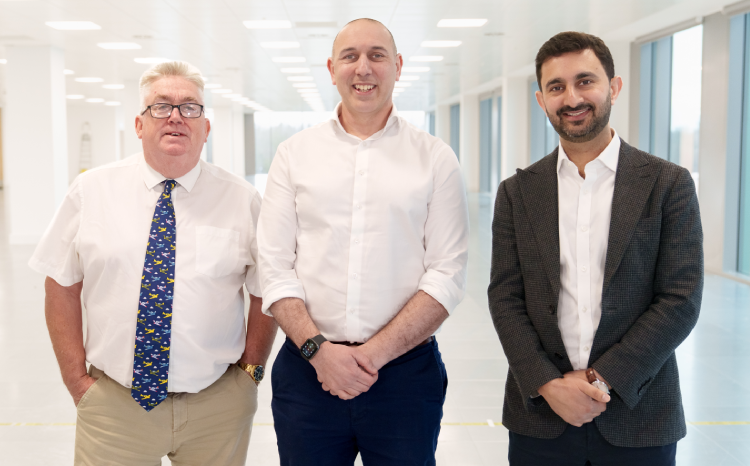The patient part
- 15 November 2012

The role of chief clinical information officer is still relatively new in the NHS. So many of the discussions that took place at the inaugural CCIO Leaders Network Annual Conference were simple attempts to define the role.
One crucial aspect of the job, however, seemed to be beyond debate. Whether from the UK or the USA, whether GP, hospital doctor or nurse, all speakers argued that CCIOs must serve as a bridge between clinicians and IT departments.
After all, who is better placed than a CCIO to understand clinical needs and communicate them to those who buy systems?
Yet, to successfully focus on clinicians is to simultaneously focus on another group that has often been excluded from informatics.
“The silent partner for so long in so many healthcare collaborations has been the patient,” said Dr Sajjad Yacoob, director of medical informatics at Children’s Hospital, Los Angeles.
“As a CMIO [chief medical information officer] you need to worry about making sure the solution is right and affects a change for the patient.”
It’s all about improving care
Dr Yacoob’s belief was echoed by Dr Paul Altmann, CCIO at Oxford University Hospitals NHS Trust. He told the delegates to the conference, which ran alongside EHI Live 2012 in Birmingham, that if a CCIO is aiming to get clinicians to embrace a system, then that system must have a positive impact on patients.
“In healthcare, what I believe drives my colleagues is a desire to do something more easily and with benefit to the patient. If there isn’t benefit to the patient, why am I changing the way I work?”
Many speakers acknowledged that actually proving that benefit can be a challenge. Dr Jonathan Richardson, clinical director of informatics at Northumberland, Tyne and Wear NHS Foundation Trust, admitted that at times “it hasn’t felt like we’ve had the evidence” to back up informatics projects.
He attributes the success of the trust’s clinical dashboard system, in large part, to better data. “We tracked the baseline and then showed improvements,” he explained.
“Having a benefits-driven model was the way in which this system was able to be articulated to colleagues. You have to articulate the benefits of projects in terms of patient care.”
Naturally, making sure that any informatics project is focused on patients does not just mean more engaged clinicians: it also means more satisfied service users.
Fiona Stephens, CCIO at Medway Community Healthcare, gave the example of an electronic patient check in facility introduced for musculoskeletal services in the region.
“That has saved a reasonable amount of time for our clinicians but it also means that patients and clinicians can make an appointment at the end of the consultation if the patient needs to come back – there is no dealing with a receptionist,” she explained.
“Patient surveys we have done since we introduced the service have really positively received it.”
Stephens was very clear where her priorities lie in the role of CCIO: “To my mind,” she said, “the CCIO role is focused on patient outcomes.”
Patient control is a step too far?
Dr Rhidian Bramley, CCIO for specialist cancer centre The Christie NHS Foundation Trust, was in full agreement. He argued that “the holy grail” will be getting to the point where there is high quality and accurate data on clinical outcomes.
“For us it’s about providing meaningful measurement of the efficacy of treatments,” he said. “[We want] to allow patients and clinicians to make informed decisions on cancer treatment and prognosis.”
Giving useful data with which they can make decisions may not be the only mission CCIOs will have when it comes to involving patients.
Speakers at the conference extensively discussed how sharing data will mean patients will no longer be asked the same question multiple times by multiple healthcare professionals. But some questioned whether that was approaching the issue from slightly the wrong perspective.
“Why do we always think we have to collect data from the patient and put it in?” asked Anne Cooper, national clinical lead for nursing at the Department of Health. “What if we’ve got it the wrong way round? What if I as a patient can put my own details in?”
“Patients are on the internet and they need to be involved,” Dr Yacoob agreed. “And they can be involved not just in receiving information but in creating information that can be used for healthcare.”
It was an idea which provoked some concern from Dr William Lumb, a practising GP, head of IM&T for Cumbria Clinical Commissioning Group, and CCIO for NHS Cumbria.
He expressed some bemusement at the struggles the secondary sector has with sharing data: “Around 60% of GP systems can give patients web access to their entire medical record, and we can also share that record with known providers,” he said.
But he felt data entry by patients would present difficulties in primary care. “Patients accessing their records is fine but patients adding to their record creates challenges because I’m legally liable for the quality of that record,” pointed out Dr Lumb.
“It’s fine if [as a clinician] you work for an acute or community trust, but as an individual clinician I stand to lose my house if it’s goes wrong – and that’s a bit of a driver.”
Change is coming
In any case, it is perhaps unclear whether patients really want to be able to submit data to their own records. But, as Shirley Adebayo argued, technology means that lack of clarity is unlikely to remain for long.
The clinical lead for clinical and IT developments at Central London Community Healthcare NHS Trust emphasised that technological improvements are not just helping clinicians give better care – they are helping the recipients of that care share opinions on it.
“We have to bear in mind the patient’s voice,” she told delegates. “It’s becoming louder and more important and we can’t and don’t want to ignore it.
“Years ago we might have got away as service providers with patients not being able to get their grievances heard – now everybody’s got a voice and need to be constantly mindful of that and seek to include the patient’s voice in what we do.
“We should really be seeing patients as partners in every sense – they are leading a tech revolution through social networks.
“So involve the clinician,” she concluded, “but also value the patient’s perspective.”




